Rumble in the jungle
by Max Delany (AFP)
Photos from Yannick Tylle
Sweat dripping from his unkempt beard, second lieutenant Kasim Lukumo halted briefly to point at the thick tangle of the central African jungle.
“See how difficult it can be to find someone here if they want to hide from you,” Lukumo told AFP, as he adjusted the straps of his 30-kilo pack and the automatic rifle slung across his chest.
“You can’t see more than just some few metres around and in front of you – sometimes you can’t see someone even when they are near.”
If there is a frontline in the hunt for Joseph Kony and his rebel Lord’s Resistance Army, then Lukumo and the sixty other soldiers in 77-Juliet squad are on it.
The unit is one of several dozen Ugandan army hunting squads – backed up since late last year by 100 American special forces troops – searching for any traces of the brutal rebel group in an inhospitable 400-kilometre stretch in the far eastern corner of the Central African Republic.
For the past two months, 77-Juliet have trekked almost a thousand kilometres across an unpopulated wedge of land between two rivers – dense streches of jungle alternating with open patches of sun-scorched rocks – where the Ugandan military believe Kony and his top commanders are hiding out.
Waking before dawn each morning they pack up last night’s camp before receiving the coordinates for that day’s march from intelligence officers at the nearest base a 100 kilometres away. They usually face a march of some 20 kilometres (12 miles).
The plan is to use the squads to constantly harry the rebels, who have splintered into small groups, denying them breathing space to regroup and resupply. And the Ugandan army says those tactics are paying off.
“The man is weak – he is feeling pressure and in a bad condition because he has no supplies, no food,” captain Daud Muhamad, the commander of 77-Juliet, told AFP. He leaned against a towering tique tree, swatting away at the swarm of tiny flies buzzing ceaselessly around his head.
Infamous for mutilating their victims and abducting children to use as sex slaves and porters, the LRA have terrorised the region for over two decades.
Last month a video calling for the arrest of Kony, a former altar boy who is wanted by the International Criminal Court, became an unlikely Internet sensation.
The Kony2012 film – made by US advocacy group Invisible Children – was watched by over 100 million people and the group has urged supporters around the world to put up posters of Kony in their cities this Friday night.
Now the Ugandan army says the rebels in this area number just 120 fighters – with another 100 women and abducted children.
They have stopped attacking local communities and survive by feeding on wild yams or whatever animals and fish they can catch, the army says.
But after more than 25 years waging a brutal insurgency, the LRA remain masters of evasion.
“They have been told not to fight with us and that if they see us they should just run away – they are difficult to catch,” said Muhamad. He has been part of the Ugandan operation chasing the LRA across three countries since the country’s air force bombed the rebels’ camps in Congo over three years ago.
Since the start of the year small groups remaining close to the border with Congo – where the Ugandan army does not have permission to operate – have started attacking civilians again, prompting fears that the rebels could try to push south to Congo.
Recently the African Union announced it had set up a 5,000-strong force to combat the LRA and improve coordination between regional armies, but there is no evidence of the much-heralded taskforce on the ground.
The Ugandan operation got a boost late last year from the world’s most powerful military when 100 US special forces deployed to the region following a directive from President Barack Obama.
In the forward base at Djema, roughly 150 kilometres from the border with South Sudan, a clean-cut captain makes brief small talk about local beer. But he refuses to answer any questions about the work the US troops are doing. Beyond that they are just seven names signed in the base’s guest book.
US officials have said that the troops – most of whom are based in Uganda – will help bolster the Ugandan forces where they need help most – intelligence gathering and coordination and logistics.
So far, the soldiers in 77-Juliet say none of the US troops have been out in the bush with them.
But they communicate regularly with surveillance planes they say are flown – sometimes at night – by Americans and have seen their supplies and morale boosted in recent months.
Joseph Balikudembe, the overall commander of the Ugandan operation, said the US deployment “added value” to the current operation. He hoped the mix of a weakened LRA, US intelligence and the Ugandan hunting squads on the ground could shift the balance definitively.
“This combination can definitely help us weaken and hopefully eliminate the LRA – we have to keep on working together to push on and end the threat,” Balikudembe said at the main Ugandan operational base at Nzara in South Sudan.
But while the US troops may help bolster the hunt, it is down to the Ugandan squads – slogging their way through perilous jungle rivers and crawling through vines – to hunt the LRA on the ground, sometimes at a heavy price.
On Wednesday a Ugandan soldier died after he was attacked by a crocodile, just weeks after a member of 77-Juliet was seriously wounded as he crossed a river.
The death was the second of a Ugandan soldier hunting the LRA this year, after another one was killed in a shootout with rebels.

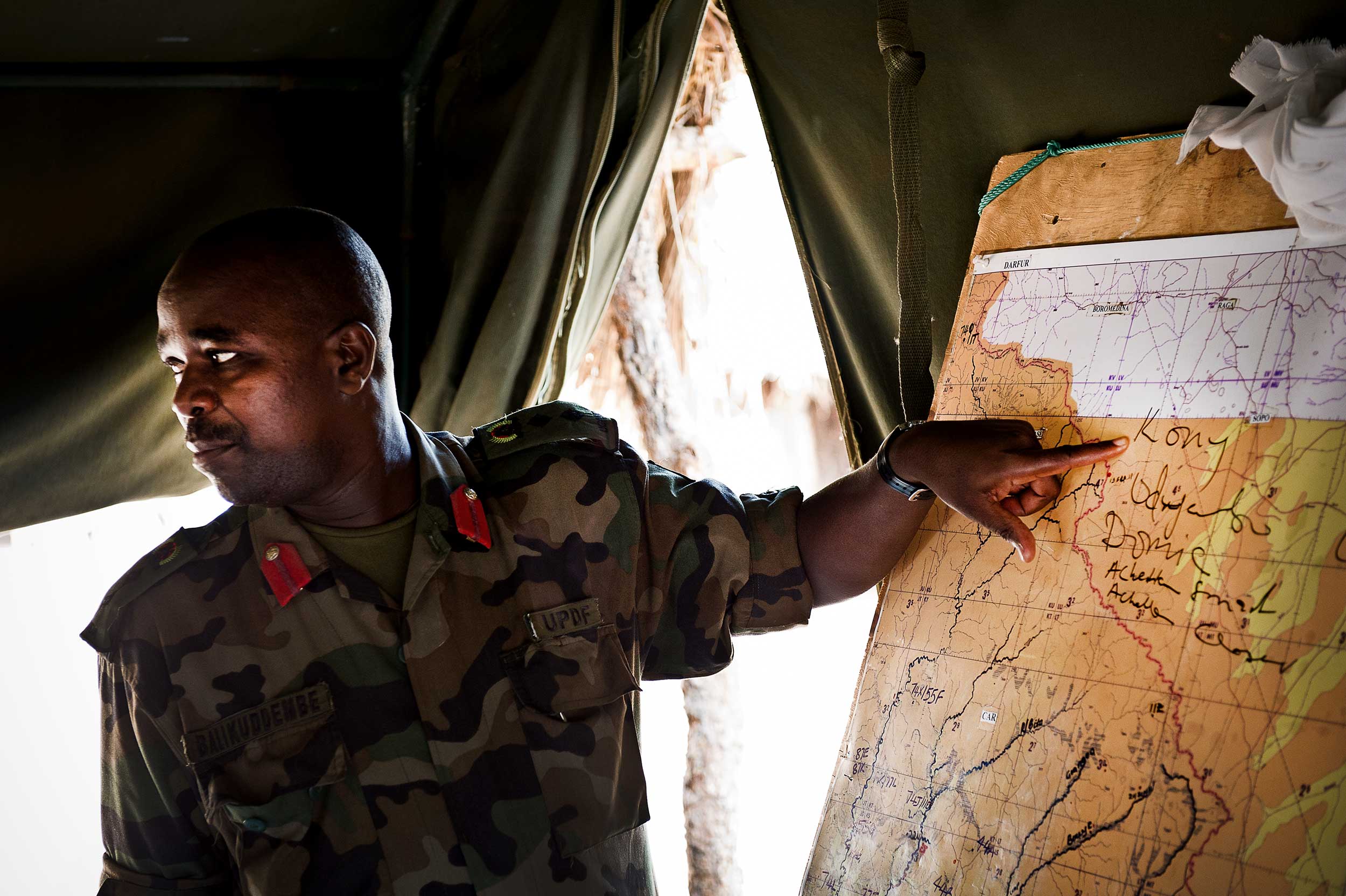
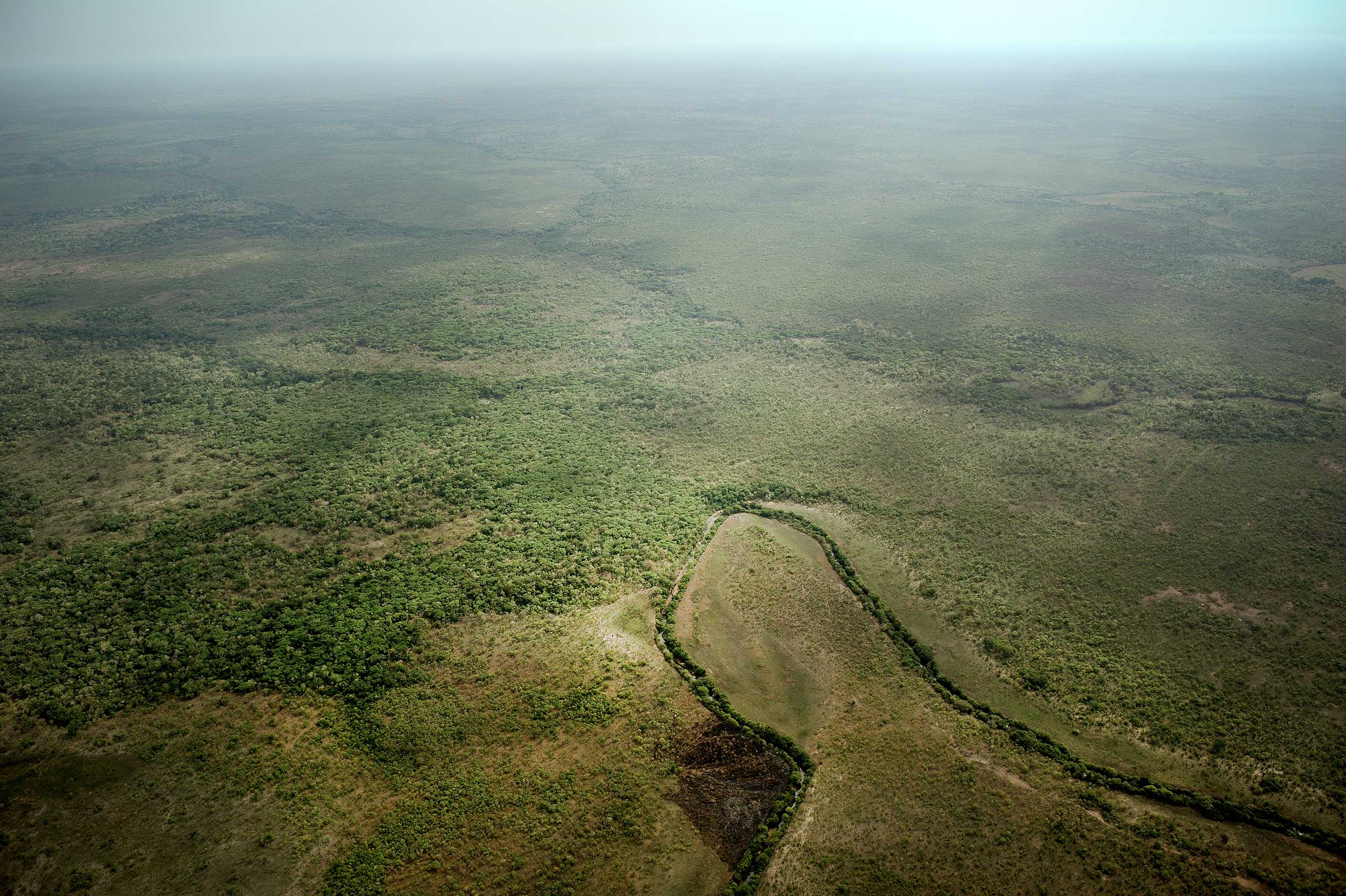
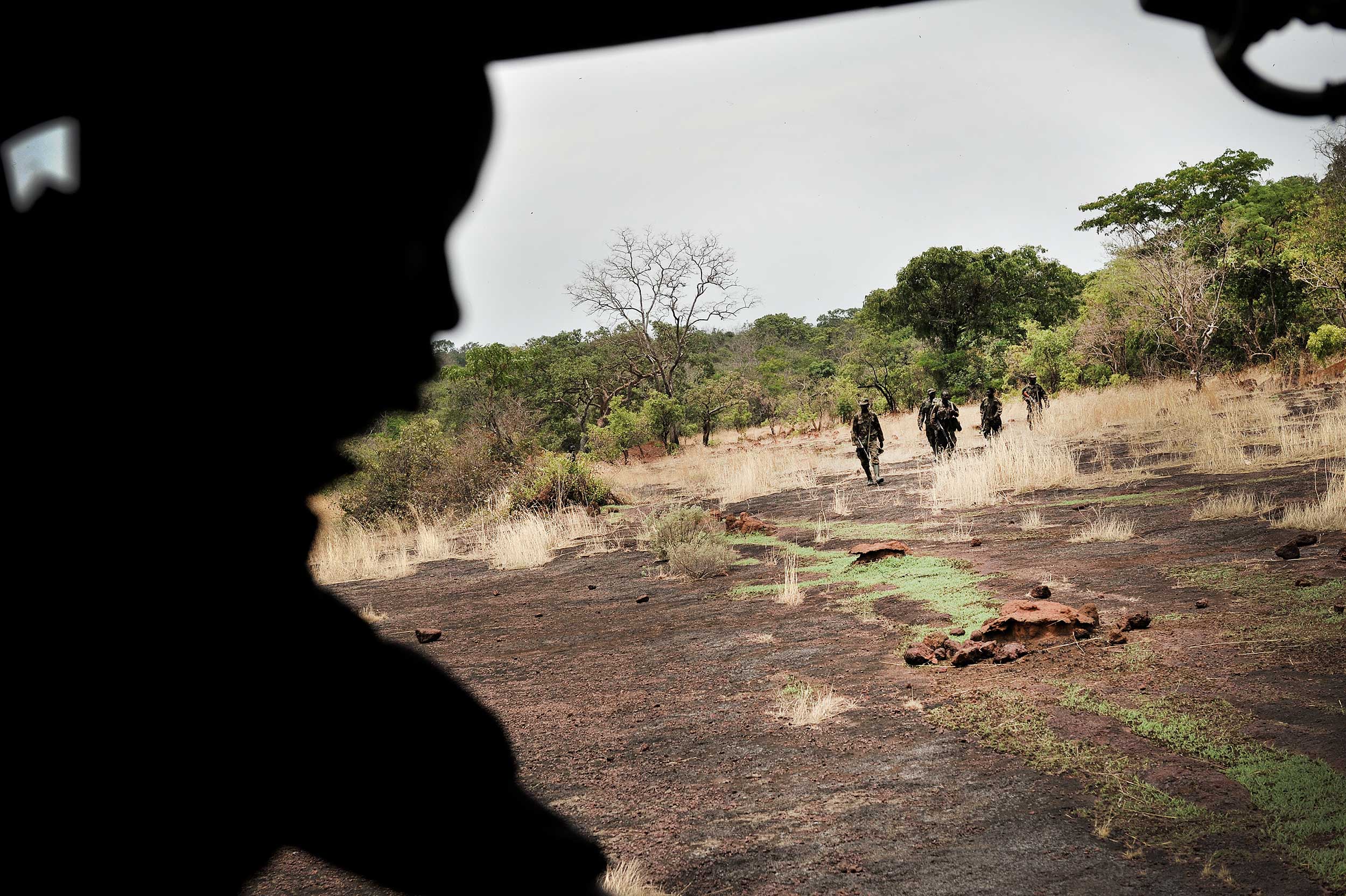
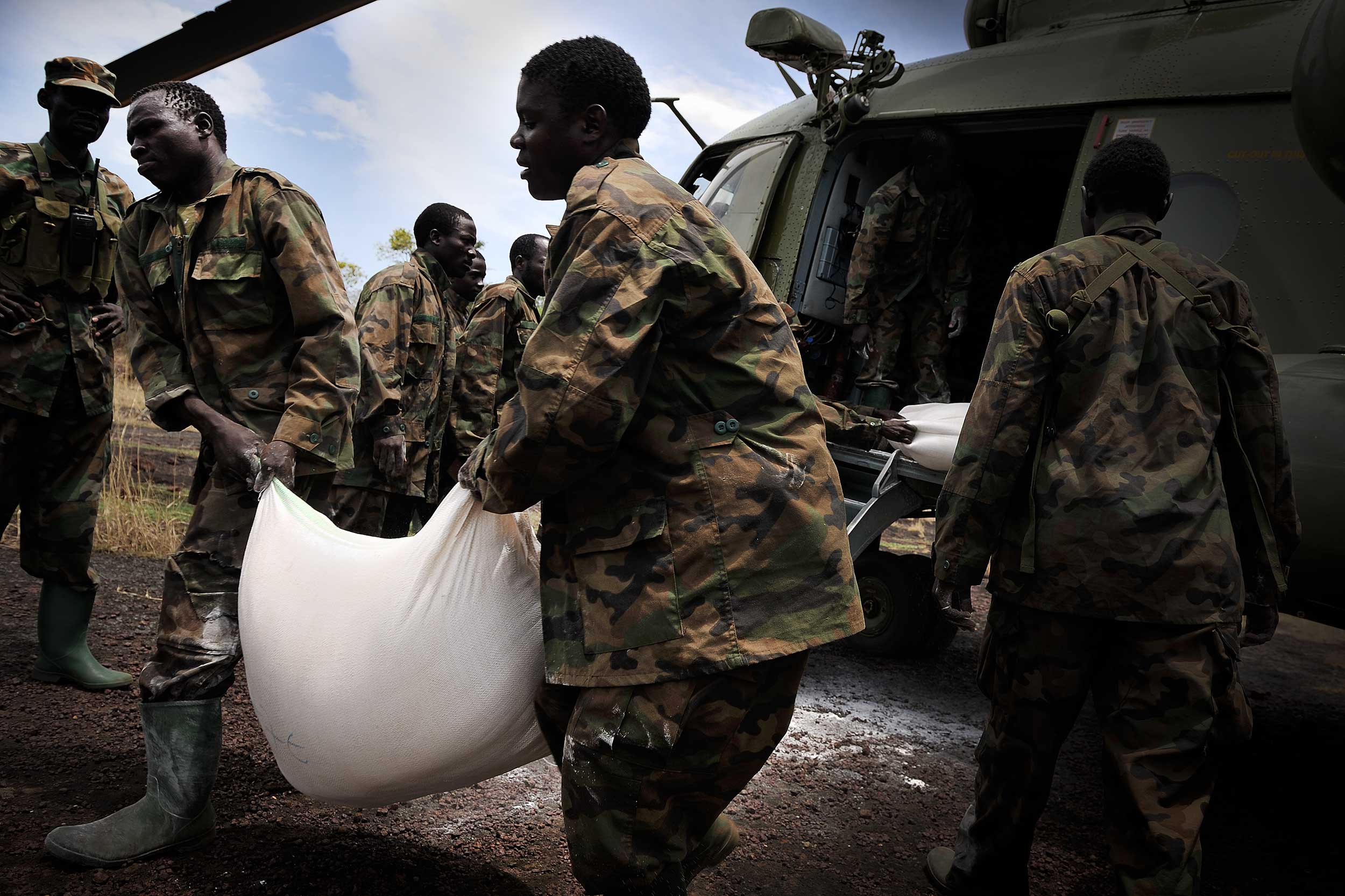
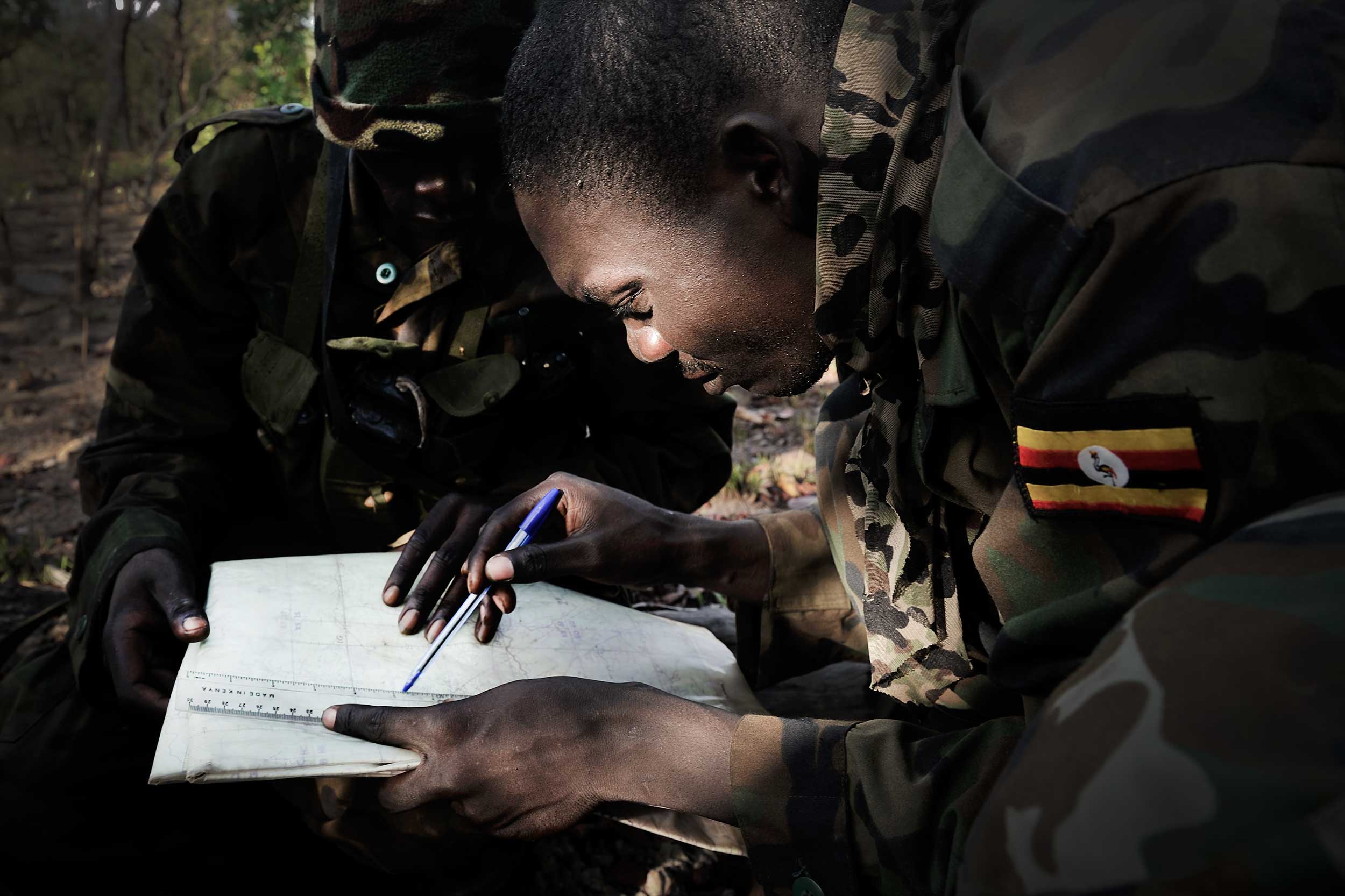
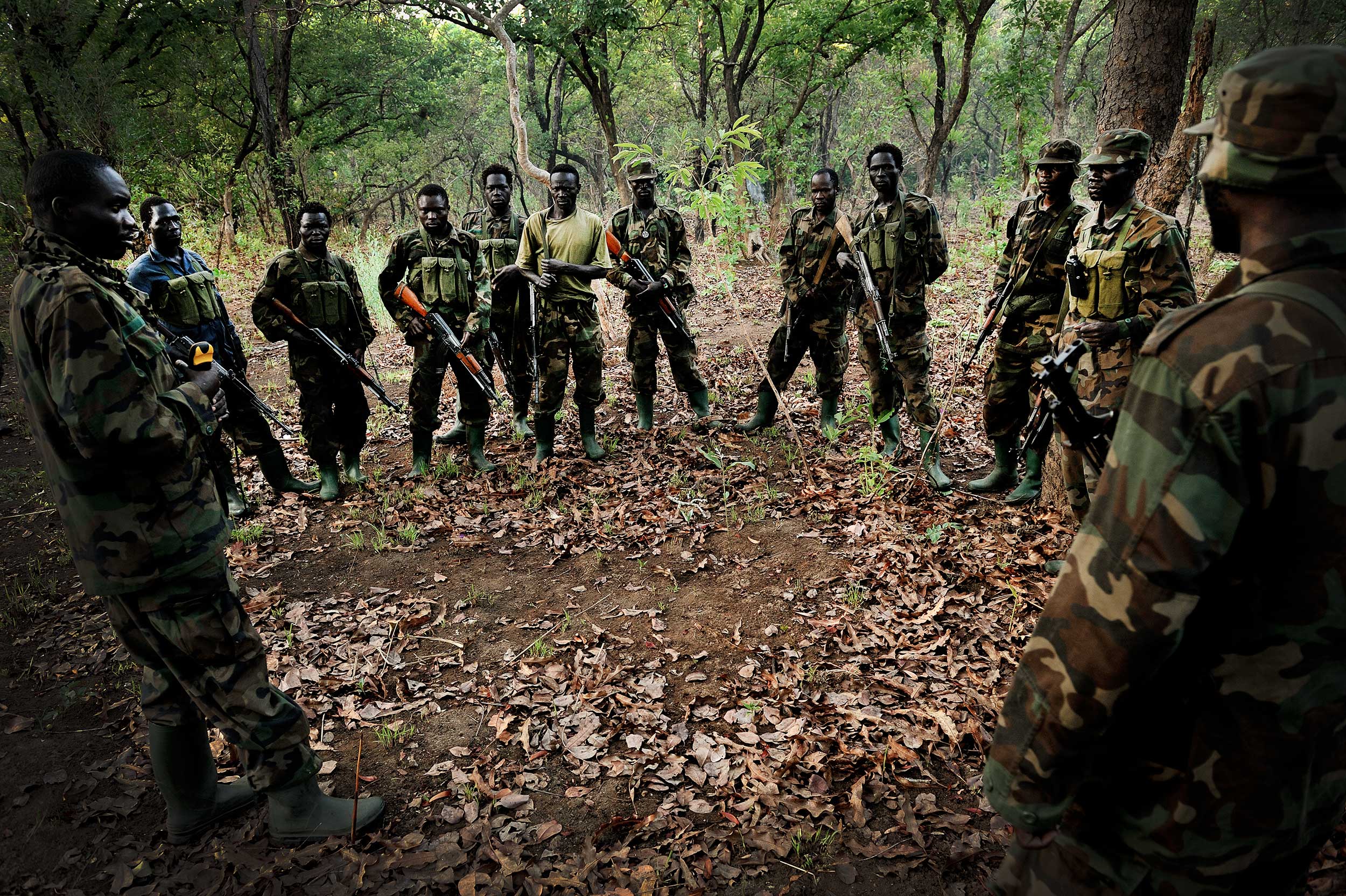
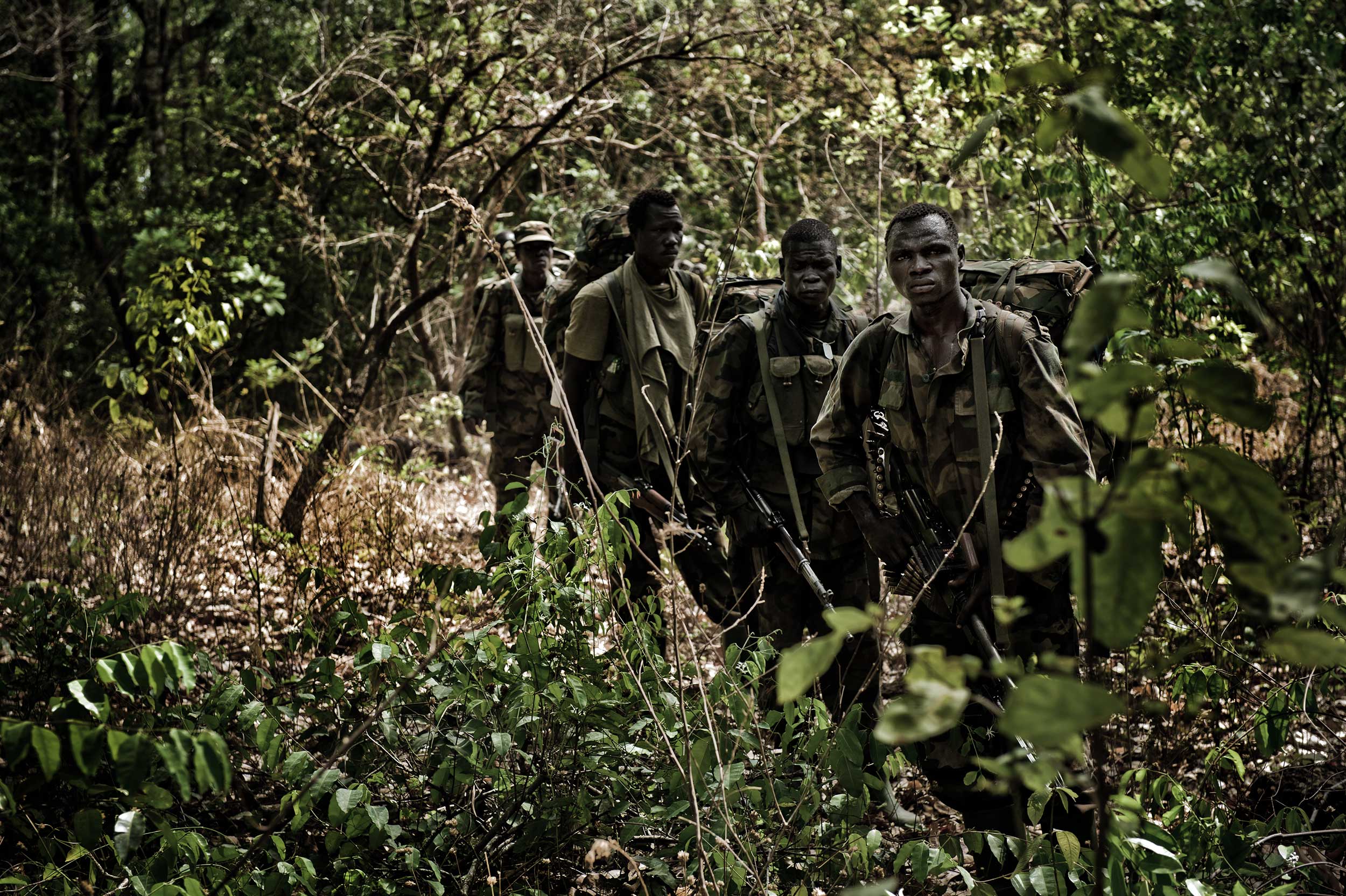
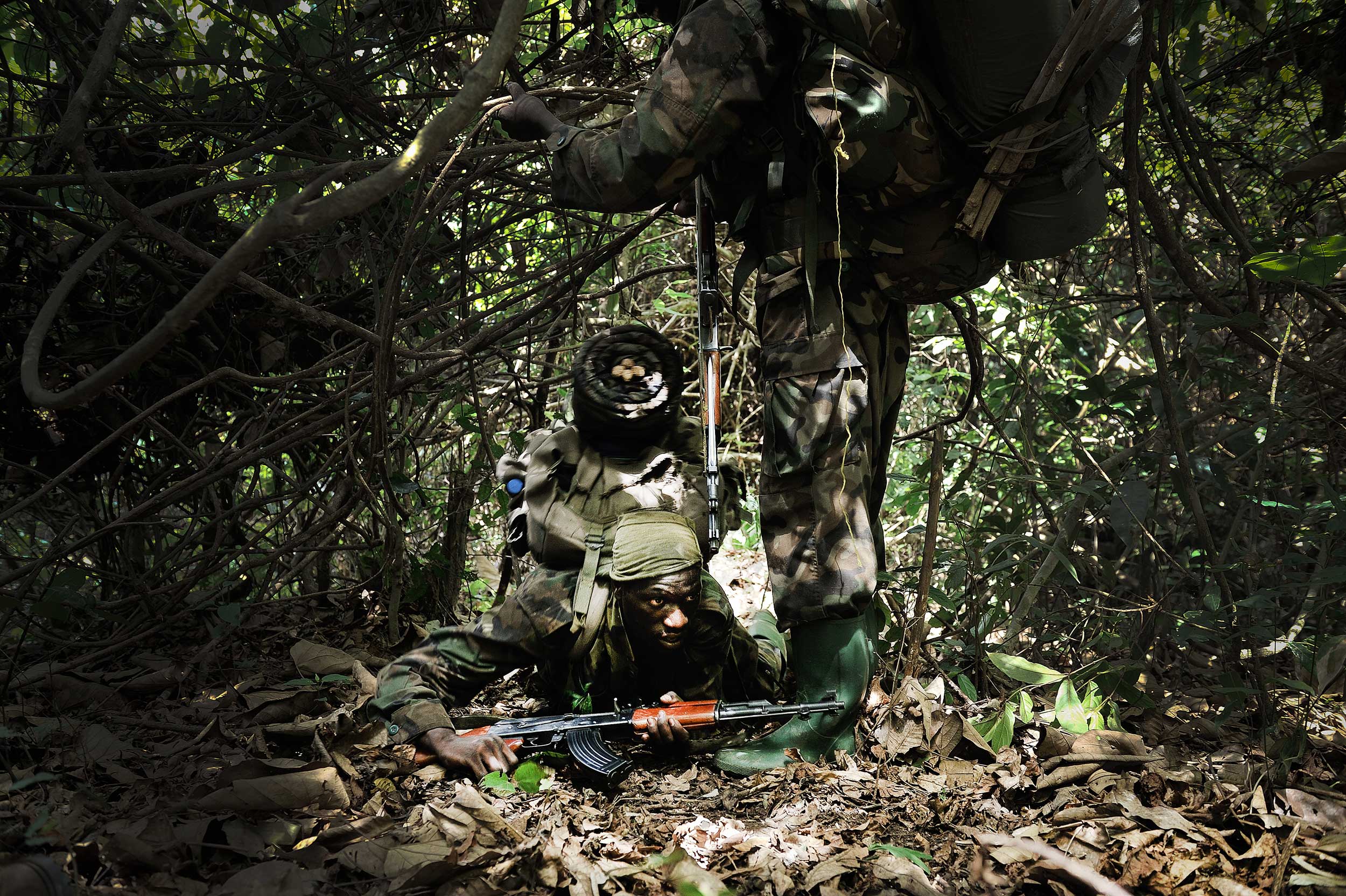
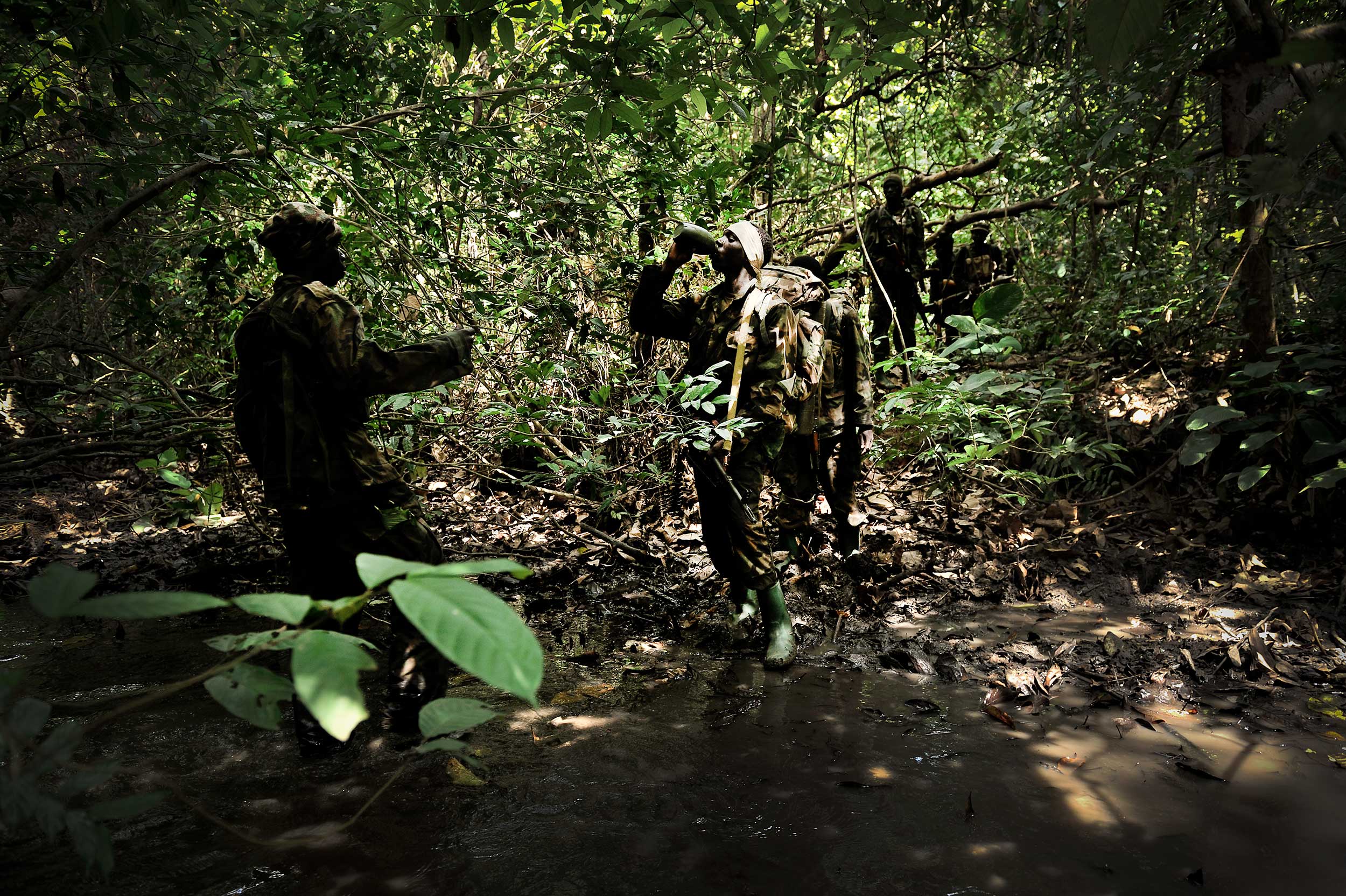
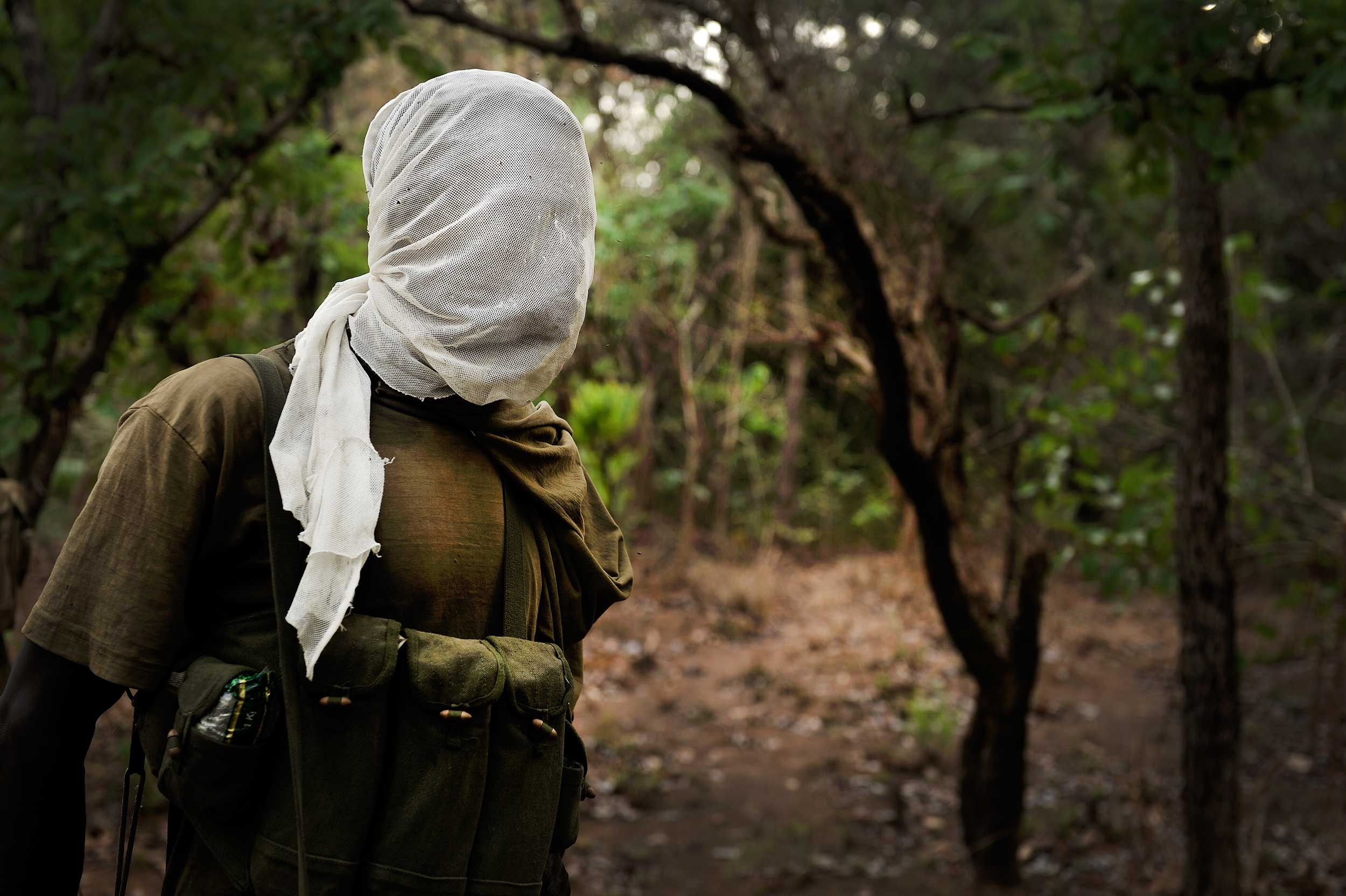
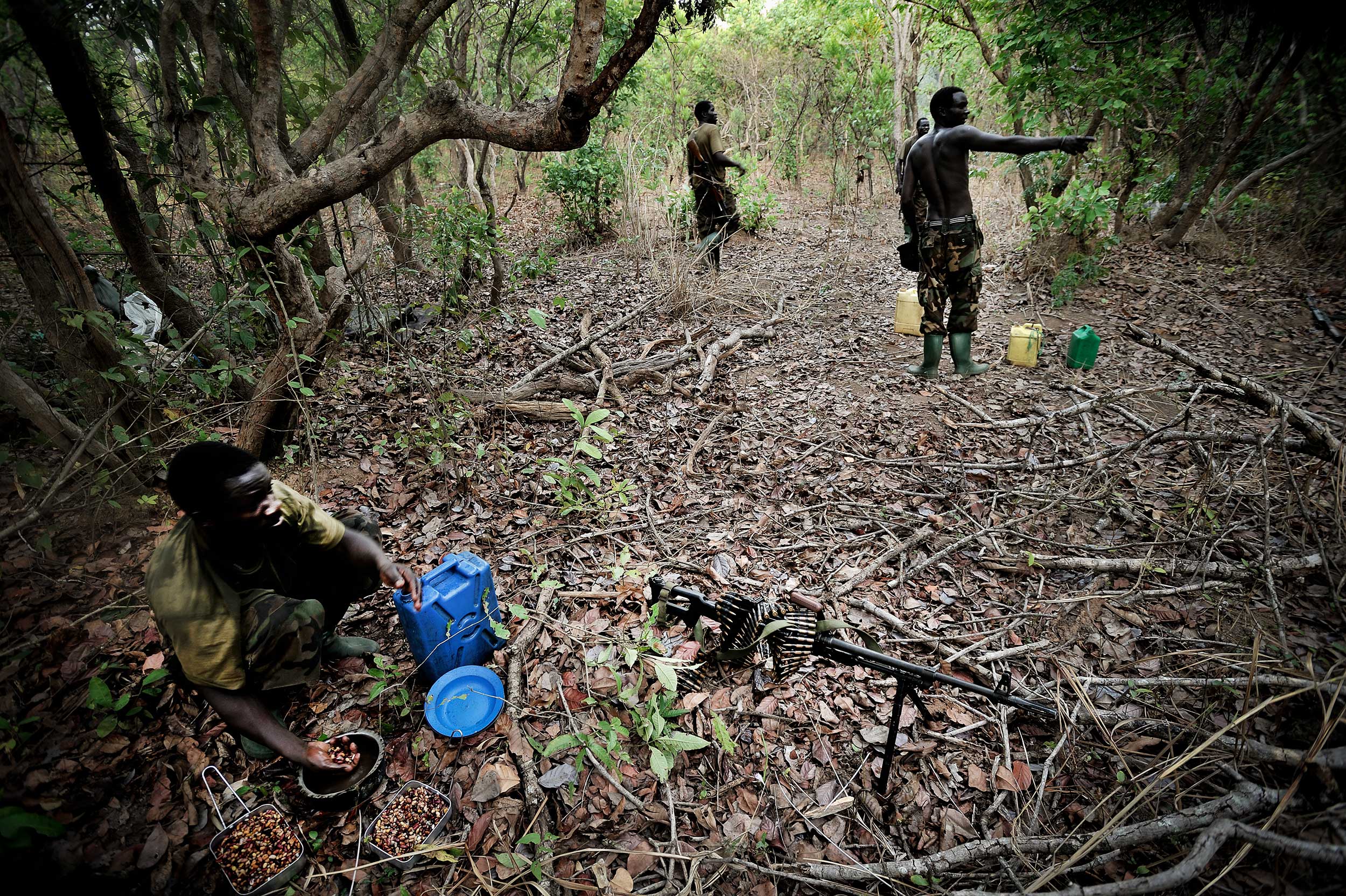
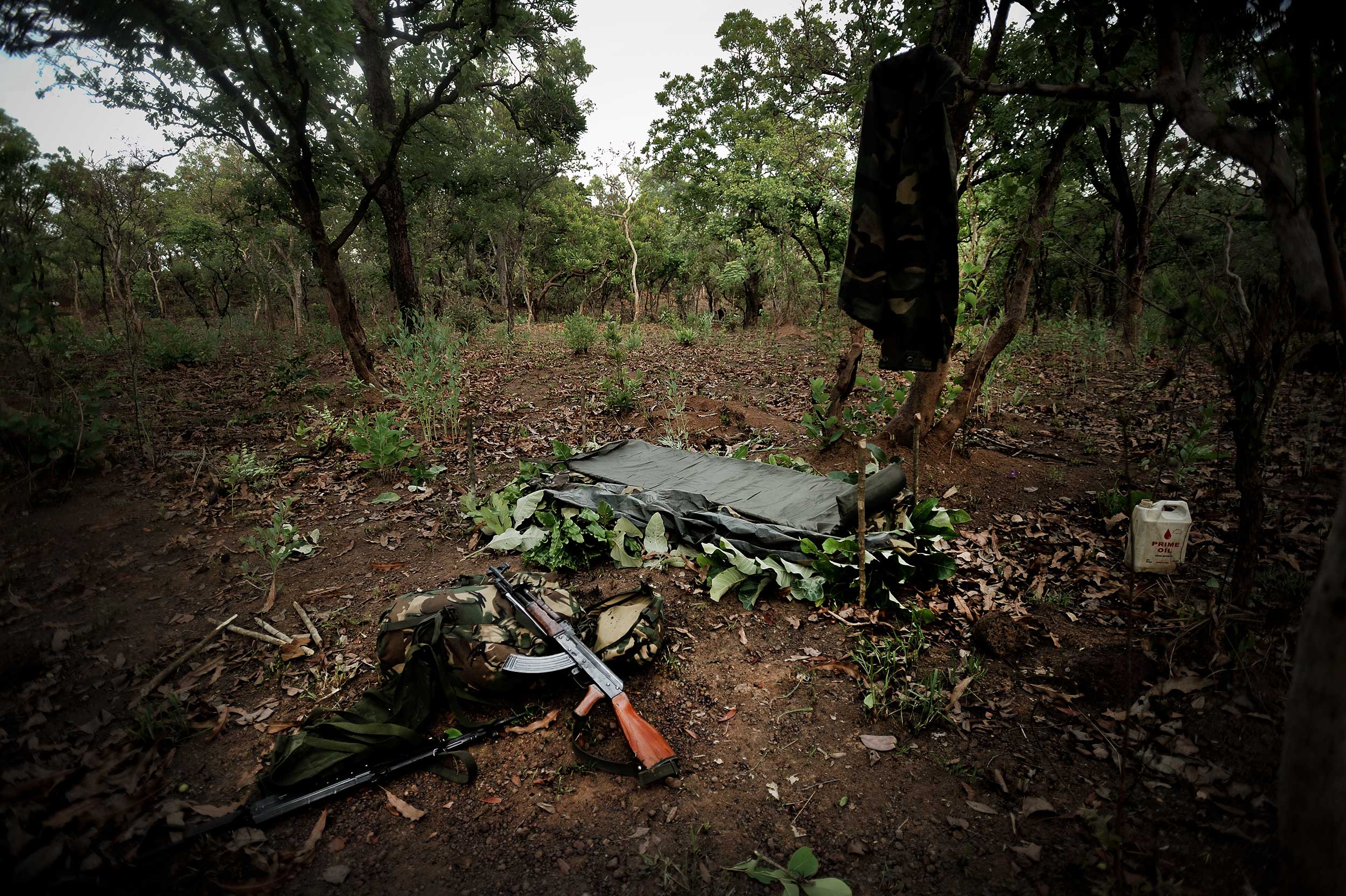
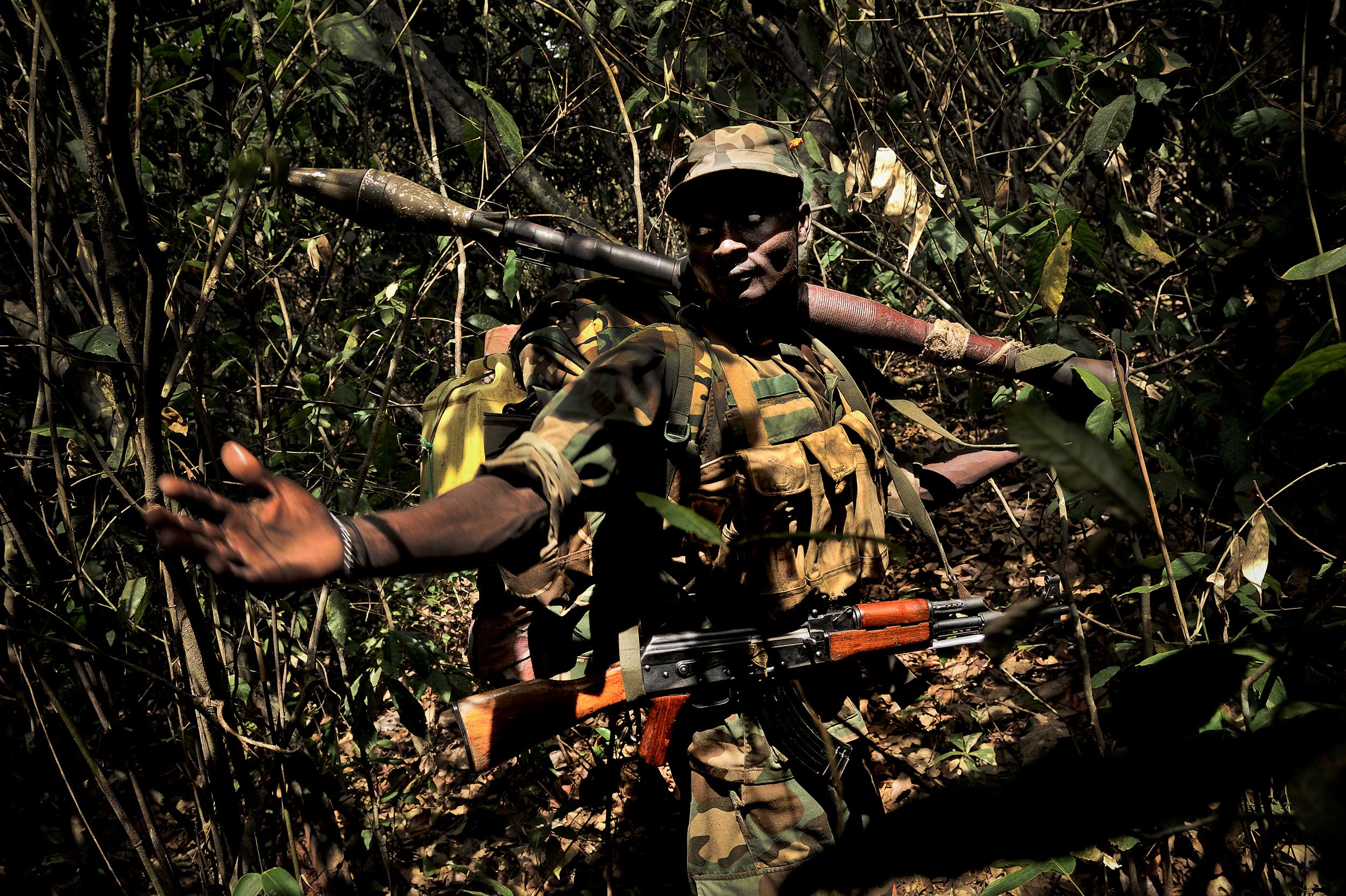
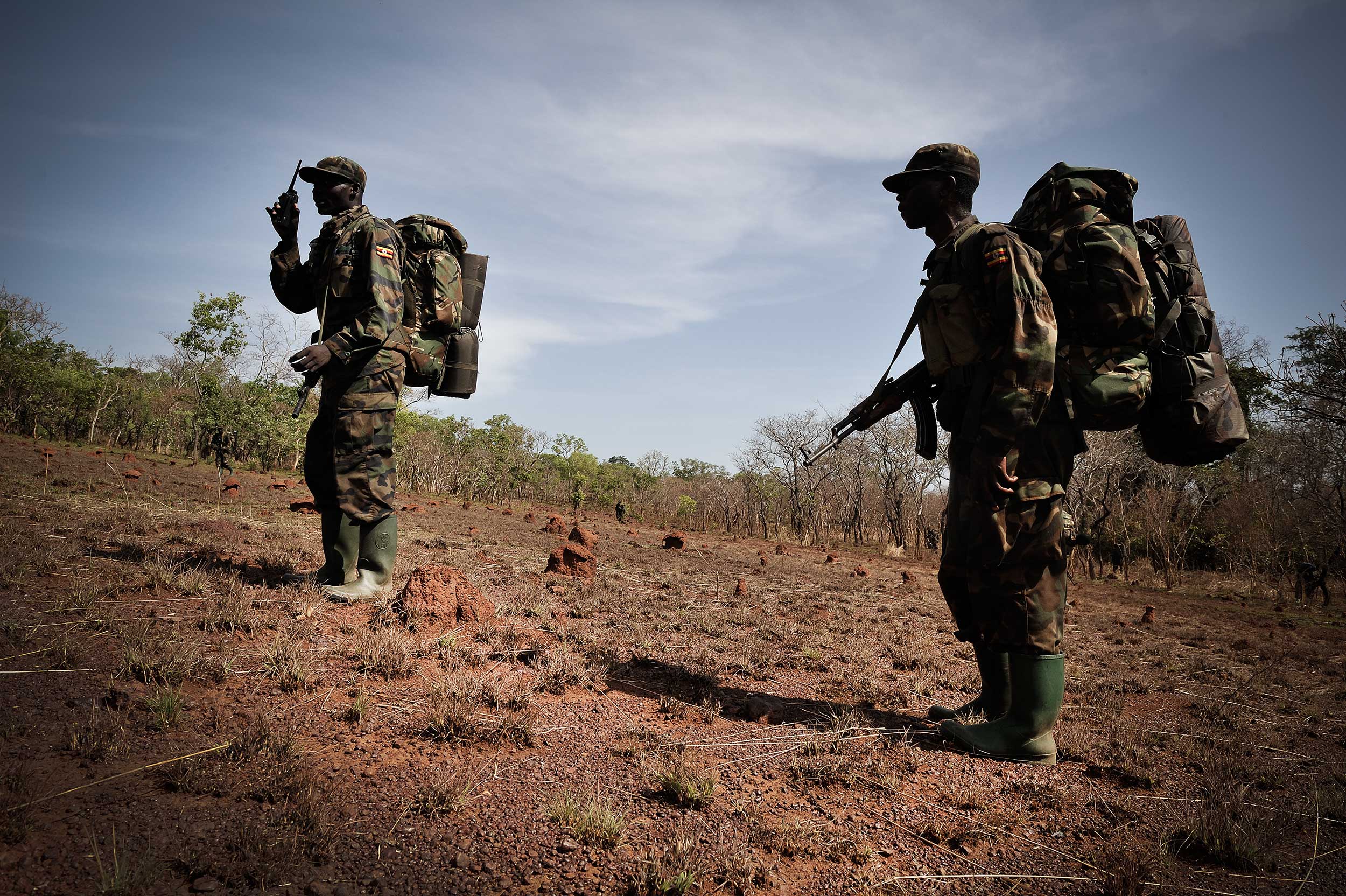
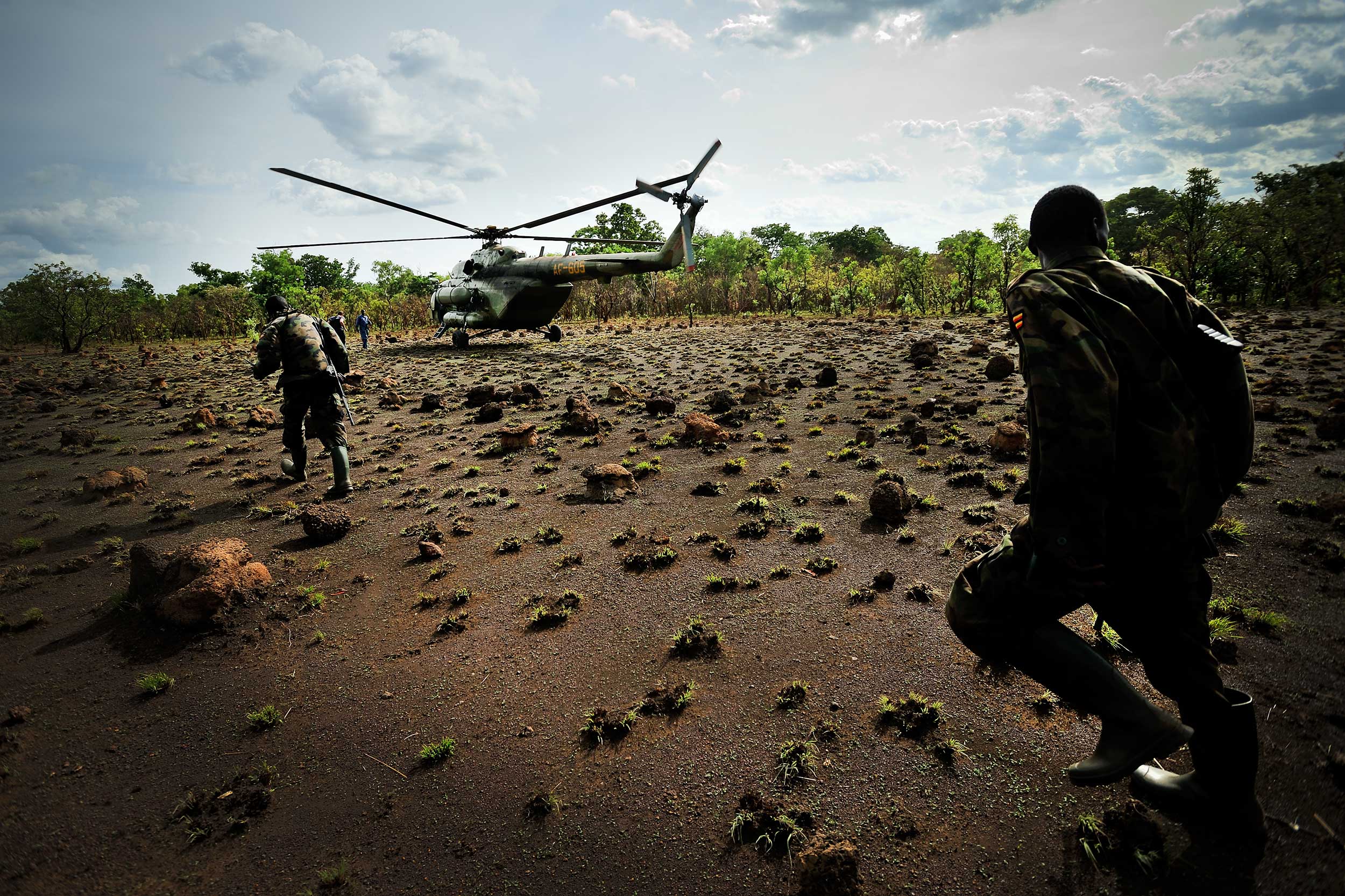
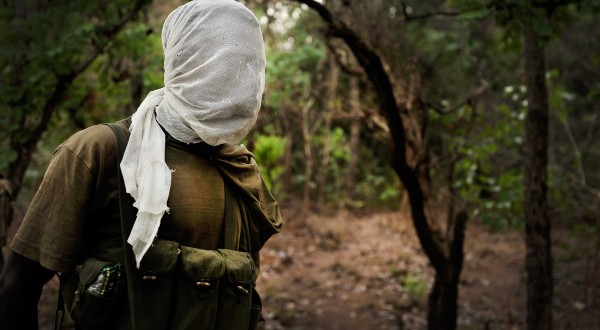
be careful, Yannick!
Hey Yannick great photos.
Cool, and great pictures! You only wonder who gives these soldiers the co-ordinates, and based on what information / satellite images?
Indeed, interesting shots. Google nor T4a are there to lead the way I see only a Garmin in a hand and a ruler. Don’t forget that they have telecom backup if they stay close enough to the Borders.